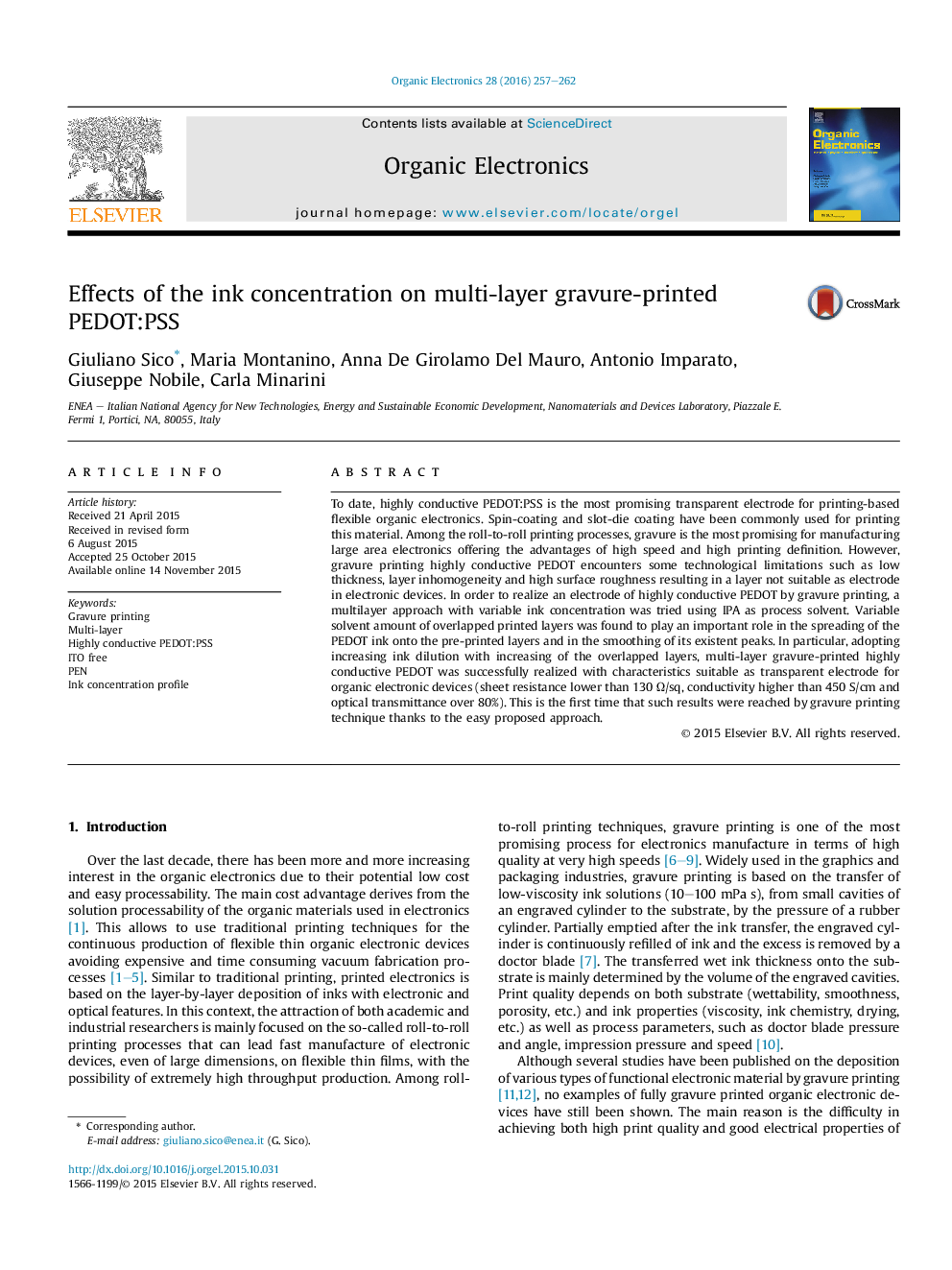| Article ID | Journal | Published Year | Pages | File Type |
|---|---|---|---|---|
| 1267142 | Organic Electronics | 2016 | 6 Pages |
•Multi-layer gravure-printed HC PEDOT was realized by variable concentration approach.•Increasing solvent facilitates the spreading of the PEDOT on the pre-printed layer.•This approach produces a HC PEDOT layer suitable as transparent electrode.
To date, highly conductive PEDOT:PSS is the most promising transparent electrode for printing-based flexible organic electronics. Spin-coating and slot-die coating have been commonly used for printing this material. Among the roll-to-roll printing processes, gravure is the most promising for manufacturing large area electronics offering the advantages of high speed and high printing definition. However, gravure printing highly conductive PEDOT encounters some technological limitations such as low thickness, layer inhomogeneity and high surface roughness resulting in a layer not suitable as electrode in electronic devices. In order to realize an electrode of highly conductive PEDOT by gravure printing, a multilayer approach with variable ink concentration was tried using IPA as process solvent. Variable solvent amount of overlapped printed layers was found to play an important role in the spreading of the PEDOT ink onto the pre-printed layers and in the smoothing of its existent peaks. In particular, adopting increasing ink dilution with increasing of the overlapped layers, multi-layer gravure-printed highly conductive PEDOT was successfully realized with characteristics suitable as transparent electrode for organic electronic devices (sheet resistance lower than 130 Ω/sq, conductivity higher than 450 S/cm and optical transmittance over 80%). This is the first time that such results were reached by gravure printing technique thanks to the easy proposed approach.
Graphical abstractFigure optionsDownload full-size imageDownload as PowerPoint slide
